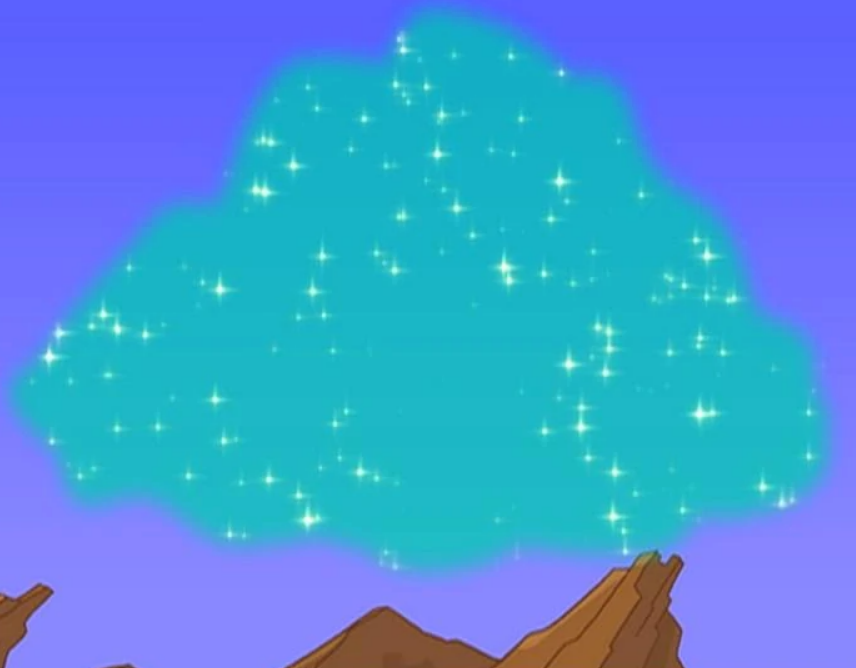I’ve understood that electrons move in a 3D field outside the nucleus and that they are quite far away from the nucleus itself (in relation to the atom scale).
What would happen if you pushed them out of this moving field of theirs, closer to the nucleus?
This happens in neutron stars.
The zillions of Gs of gravity squishes atoms together, until electrons and protons are forced together, and become neutrons, Of course, at those densities, a spoonful of neutron star weighs as much as Mt. Everest,
Ooh okay they just change into another atom-piece-particle when added together!
Let’s talk about orbital mechanics for a bit, and we’ll get back to electrons and protons.
Orbits happen because two objects are attracted to each other, but are moving too quickly in relation to each to actually collide with the other object. The faster the objects are moving, the wider the orbit, because they’re missing by a larger amount.
In order for an electron to get closer to a proton, you have to either increase the pull between them, such as with an electrical field, or slow down the electron somehow. Your answer depends on which of these things is happening.
If you push on it with something like an electrical field, the moment you stop pushing the orbit will correct itself, unless you pushed it so hard you got the electron to collide with a proton in the nucleus, in which case you get a neutron and a neutrino emitted. At some point in the future, it’ll probably decay into a proton and an electron again.
If you somehow just slow down the electron, you get a closer orbital shell, and it’ll stay there until something changes it’s velocity again. If you slow it down enough that it hits a proton in the nucleus, the same thing happens as above.
Is there a “spring” there then? Does the electron jump above its original orbit once you remove the external force and then oscillate a bit until it settles, or does it simply return to where it should be?
For a single electron, kind of. There’s no force acting on it outside of the attractive force between it and the nucleus, so it would just end up in an elliptical orbit, and if you just looked at the distance from center, it would appear to oscillate like a spring as it goes around.
This is misleading, though, because springs push and pull in both directions, and that’s not what’s happening here. What’s actually happening is something like Pluto’s orbit, where it’s closer than Neptune half the time and farther the other half, but nothing’s really making it do that besides geometry.
If you have other electrons, like in most atoms, now you get a repulsive force from the electrons, which are all in their own spherical shells, and they interfere with elliptical orbits enough that they eventually become spherical. This would look more like a spring eventually settling if you just look at distance from center.
In normal conditions, this is almost impossible. You can’t just build a wall around an electron to limit its movement, and there is an inherent uncertainty about its position anyway. A better explanation would require concepts from quantum mechanics, but it wouldn’t be an ELI5 anymore.
In very extreme conditions, like the collapsing core of a supernova explosion, electrons are squeezed really really hard between the nuclei. In this case they can enter a nucleus, fuse with a proton and turn it into a neutron. The entire core of the star becomes a ball of neutrons, also known as a neutron star. This is the densest object that can exist, short of collapsing even further into a black hole.
You get neutronium. Basically, what happens is that as you squeeze the electron closer to the nucleus (with gravity, for example) the electrons can combine with the protons (and an antineutrino) to make more neutrons. This is what happens when neutron stars form (and why I used gravity as the example force)
I’m no expert, but I found this. An electron entering the nucleous and interacting with a proton is called electron capture. The proton and electron are converted into a neutron and an electron neutrino. The wiki article says this is a form of radioactive decay.
deleted by creator
Oof, seems not to be in an ELI5-format 😅
I believe you would need a lot of energy to push them inside its natural field. I believe that they’d just pop back to where they should be, maybe creating an explosion at the same time? Or maybe the energy needed to push them in would be so great that you’d end up with an atom-sized black hole…but I don’t really know, I only guess.
deleted by creator
Yes I’m aware of the cloud model.
Like magnets repelling, they would push back apart. It would take a lot of pushing force to get them closer together.
When things are that tiny, you’re also pushing with other electrons. Nothing is actually making contact because all the electrons repell like magnets. So you can’t take a tiny tweezers or something to push in the electron, because the tweezers would also be made of atoms.
They combine with protons to form neutrons. That’s how neutron stars are formed.



